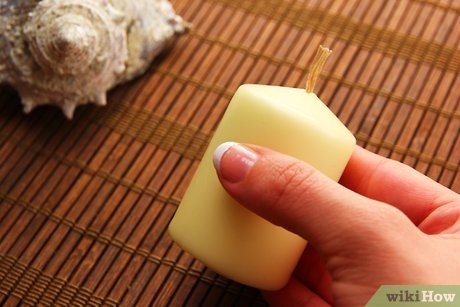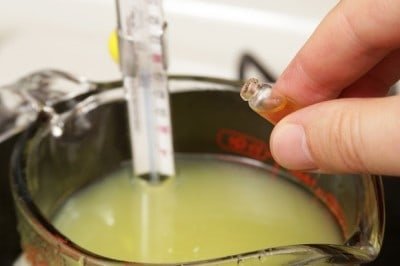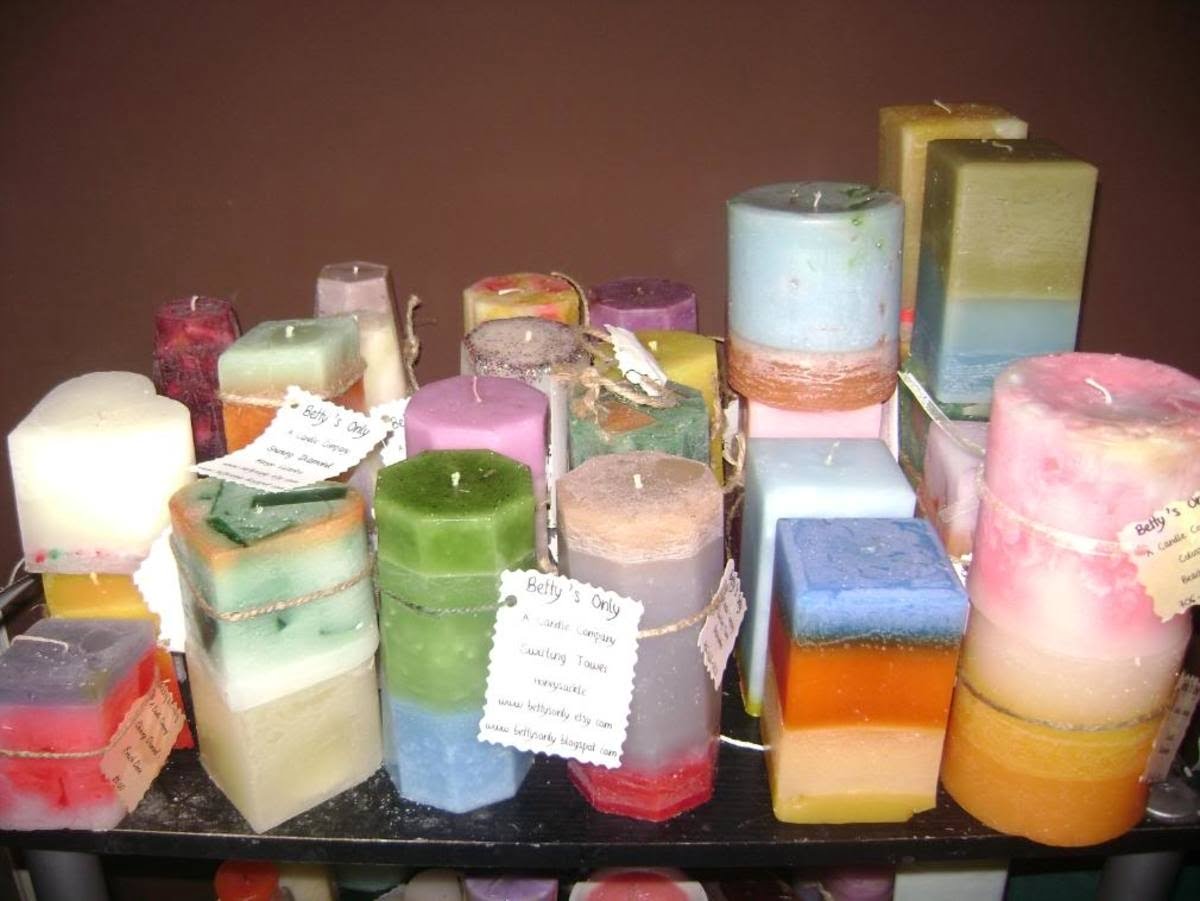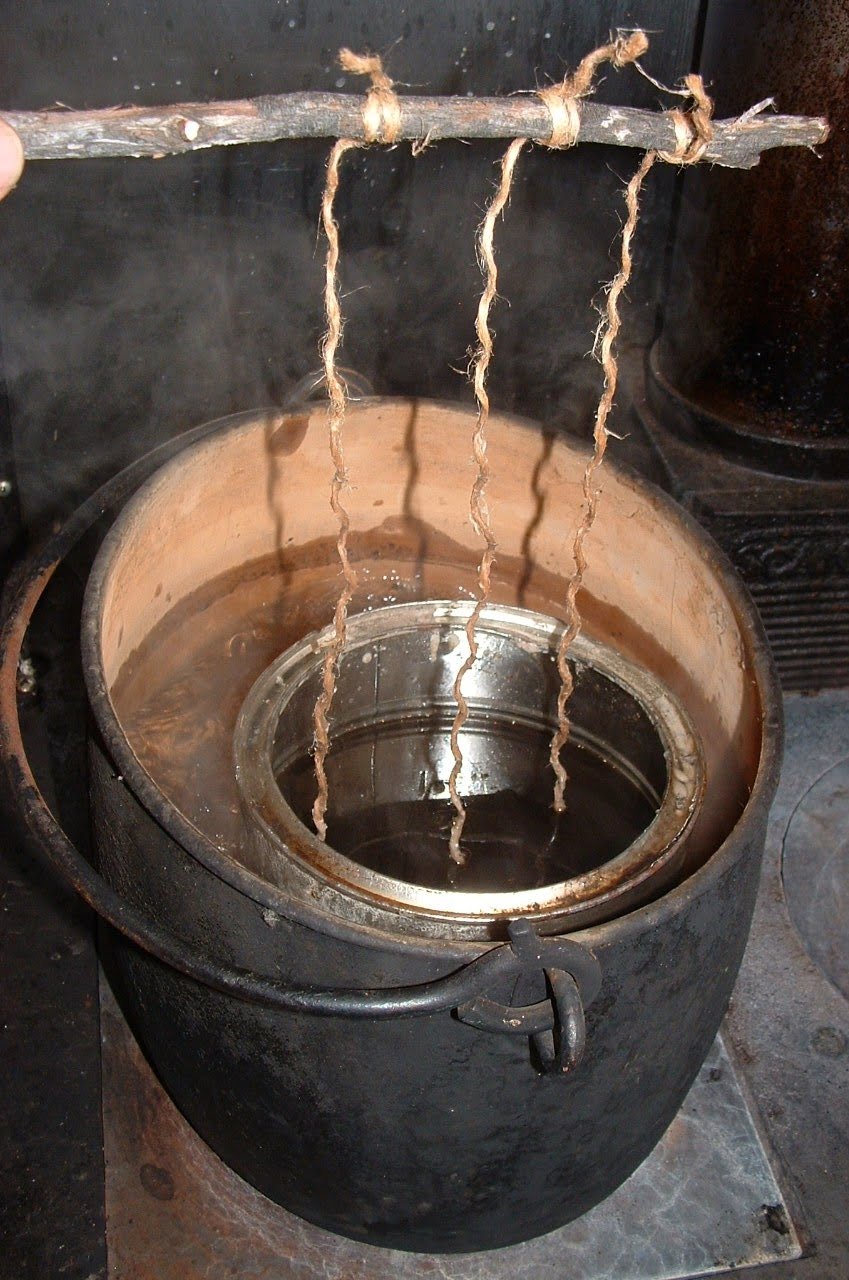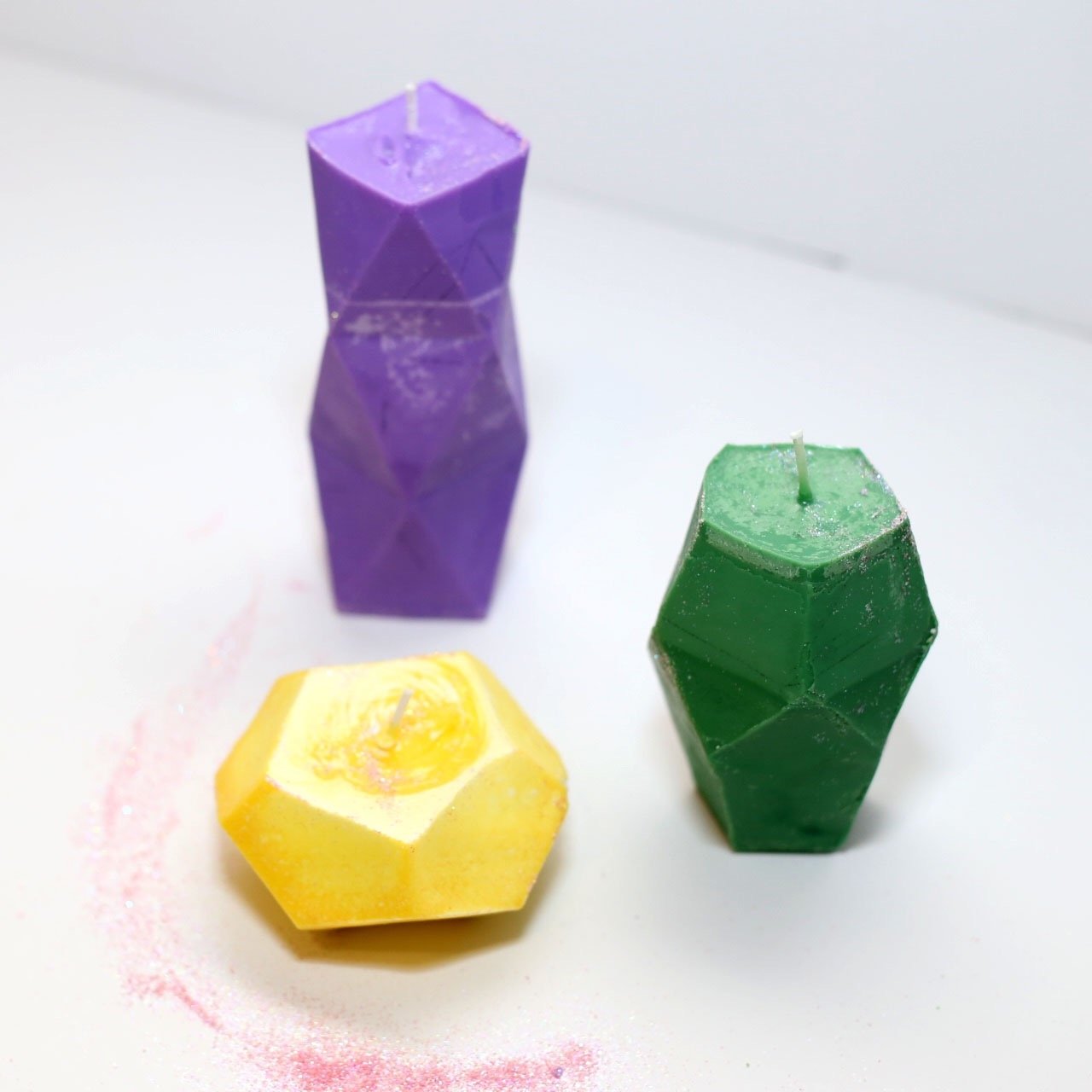Colonial candle making, an art that has been passed down through generations, required a specific set of tools and equipment to produce quality candles. The crafting of candles in colonial times was a necessity for providing lighting in homes, as well as for ceremonial and decorative purposes. In this article, we will explore the essential tools and equipment used in colonial candle making, as well as the history, methods, and materials involved in this timeless craft.
During the colonial era, candle making was an important skill that played a vital role in everyday life. Candles were primarily made from sustainable materials such as beeswax and tallow, and traditional techniques were employed to create them. Understanding the history and significance of colonial candle making provides valuable insight into the craftsmanship and resourcefulness of early settlers.
We will delve into the historical context of candle making during colonial times and examine how it evolved over the years. From the basic tools used to the sustainable materials utilized, we will uncover the techniques that have stood the test of time. Whether you are a history enthusiast or an aspiring candle maker looking to explore traditional methods, this article aims to provide a comprehensive overview of the tools and equipment essential for engaging in colonial candle making.
History of Candle Making in the Colonial Era
Candle making has been an essential skill throughout history, especially during the colonial era. The history of candle making in colonial times is filled with interesting facts and traditions that have influenced the way we make candles today. During the colonial era, candles were primarily made for lighting homes, providing a source of heat, and for religious ceremonies.
The process of making candles in colonial times was quite laborious and required specific tools and equipment. Some essential tools used for colonial candle making included:
- Molds: In the colonial era, metal molds were commonly used to shape the wax into cylindrical or conical forms.
- Wicking: Cotton wicks were used to create the burning element of the candle. These wicks had to be carefully prepared and placed within the mold before pouring the hot wax.
- Pots and Kettles: Large iron or copper pots were used to melt tallow or beeswax over an open fire.
Sustaining materials such as tallow, beeswax, and bayberry wax were commonly used in colonial candle making. Tallow was rendered from animal fat and was widely available during this time period. Beeswax, on the other hand, was considered a luxury material due to its cost and availability.
The traditional methods of colonial candle making involved melting the chosen wax material in a large pot over an open flame. The molten wax would then be poured into molds containing prepared wicks. Once cooled and solidified, the candles would be removed from their molds and trimmed to ensure they burned cleanly and evenly.
Understanding the tools, materials, and methods used in colonial candle making provides insight into the resourcefulness and ingenuity of early American settlers. Learning about these historical practices can also inspire modern-day candle makers to explore sustainable options for their craft.
Overall, exploring the history of candle making in the colonial era sheds light on how this timeless art has evolved over time while still maintaining its essential role in society.
Essential Tools and Equipment for Colonial Candle Making
Colonial candle making was an essential skill in early American history, providing light for homes and businesses before the widespread use of electricity. The process of creating candles in colonial times required several essential tools and equipment, many of which are still used today in traditional candle making practices.
Molds and Containers
One of the most crucial tools for colonial candle making was the use of molds and containers to shape the melted wax into a solid form. In colonial times, these molds were often made from materials such as tin, pewter, or even wood. Tallow or beeswax would be poured into these molds to cool and solidify into the shape of a candle.
Wicking Materials
Another essential tool for colonial candle making was wicking materials, such as cotton or linen fibers. These wicks were crucial for drawing up the melted wax as it burned, allowing for a steady and consistent flame. In colonial times, these wicks were typically twisted by hand and then dipped into wax multiple times to create a sturdy core for the candle.
Melting Pots
Melting pots were also vital equipment for colonial candle making, used to heat and melt the tallow or beeswax. These pots were often made from metal, such as brass or iron, and were placed over an open flame or hot coals to liquefy the raw materials before pouring them into the molds.
In modern times, while some traditionalists may still use these tools for colonial candle making, advancements in technology have introduced more efficient and precise methods for creating candles on a larger scale. However, many artisans continue to appreciate the authenticity and connection to history that comes with using traditional tools for their craft.
Sustainable Materials Used in Colonial Candle Making
Beeswax
One of the most sustainable materials used in colonial candle making is beeswax. Beeswax candles were highly valued during colonial times for their bright flame and pleasant aroma. In addition to its renewable nature, beeswax is also biodegradable, making it an eco-friendly choice for candle making. Colonists would often source beeswax from local beekeepers or produce it themselves, as part of their self-sufficient lifestyle.
Tallow
Another common sustainable material used in colonial candle making is tallow, which is derived from animal fat, usually from sheep or cows. While not as aromatic as beeswax, tallow candles provided a cost-effective and readily available option for colonists. The use of tallow allowed colonial candle makers to repurpose by-products from animal husbandry that might otherwise go to waste. This resourcefulness made tallow candles a key element of sustainable living in colonial times.
Bayberries
In regions where bayberry bushes grew abundantly, colonists would harvest the waxy coating on the fruit to create bayberry wax candles. This natural and renewable material allowed colonists to make candles without relying on imported or non-renewable resources. Harvesting bayberries for candle making also served as a communal activity, bringing together families and communities to engage in a sustainable practice that contributed to their self-sufficiency.
By incorporating these sustainable materials into their candle making practices, colonial artisans demonstrated resourcefulness and mindfulness towards the environment that modern candle makers can draw inspiration from today. The use of beeswax, tallow, and bayberries exemplifies how early Americans leveraged natural resources within their surroundings to create essential tools for colonial candle making while prioritizing sustainability and self-sufficiency.
Traditional Methods and Techniques of Colonial Candle Making
Colonial candle making was an essential skill in early American history, providing light for homes, businesses, and public spaces. The process of making candles in colonial times was labor-intensive and required specific tools and techniques to produce a quality product.
One of the most common methods used in colonial candle making was the dipping method. This involved repeatedly dipping a wick into melted tallow or beeswax to build up layers and create a solid candle. Another technique was molding, where the wax was poured into molds to harden into various shapes and sizes. Both methods required precision and patience to produce durable and long-lasting candles.
The tools used for these methods included dipping vats for the dipping process, molds for shaping the candles, wicking needles for threading the wicks, as well as pots, pans, and stirring sticks for melting and mixing the wax. These tools were often handmade by skilled craftsmen or women and were essential for producing candles that were vital for lighting homes and businesses before the advent of electricity.
| Colonial Candle Making Tools | Description |
|---|---|
| Dipping Vats | Large containers used for repeatedly dipping wicks into melted wax |
| Candle Molds | Various shapes and sizes used to mold the wax into solid candles |
| Wicking Needles | Used to thread the wicks through the center of molded candles |
| Pots, Pans, Stirring Sticks | For melting and mixing wax over an open flame |
Importance of Candle Making in Colonial Times
The colonial era was a time when candles played a crucial role in daily life. With limited access to electricity or gas lighting, candles were essential for providing light after sunset in colonial homes. Additionally, they were also used for religious ceremonies, social gatherings, and as a means of telling time. The importance of candle making in colonial times cannot be overstated, as it was a necessary skill that provided both light and economic opportunities for many individuals.
One of the primary reasons why candle making was so important during the colonial era was due to the scarcity and expense of other lighting sources such as oil lamps or torches. Candles were relatively easy and cost-effective to produce, making them accessible to a wide range of people.
Furthermore, they could be made from readily available materials such as tallow (animal fat) or beeswax, which meant that individuals could create their own light source without having to rely on external suppliers.
In order to meet the demand for candles during colonial times, an array of essential tools and equipment were utilized in the candle making process. These tools included molds for shaping the candles, wicking material for the flame, melting pots for heating the wax or tallow, and cutting implements for trimming the finished candles. Each tool played a crucial role in ensuring that candles were produced efficiently and met the necessary quality standards.
| Colonial Candle Making Tools | Function |
|---|---|
| Molds | For shaping the candles |
| Wicking material | For the flame |
| Melting pots | For heating the wax or tallow |
The significance of these tools for colonial candle making extends far beyond simply creating light; they represented self-sufficiency and independence for colonial communities. With these tools at their disposal, individuals could produce their own light source without relying on outside sources. This independence was particularly vital during times of scarcity or conflict when access to commercial goods may have been limited.
Additionally, candle making also provided economic opportunities for many individuals during this time period. Those who had mastered the art of candle making could sell their products within their local communities or even trade them with neighboring settlements. As such, this timeless craft not only served practical purposes but also contributed to the economic growth and sustainability of colonial society.
Comparison of Colonial Candle Making Tools to Modern Tools
When it comes to colonial candle making, the tools and equipment used by our ancestors were quite different from what we use today. The comparison of colonial candle making tools to modern tools provides an interesting insight into how far the art and science of candle making has come over the centuries.
In colonial times, candle makers relied on simple yet effective tools to create their products. Some essential tools for colonial candle making include:
- Molds made from tin or pewter
- Dipping racks for creating dipped candles
- Wicking needles for threading wicks through molded candles
- Pots and kettles for melting tallow or beeswax
These basic tools were sufficient for producing candles that provided light and heat in colonial homes. In contrast, modern candle making tools have evolved to be more efficient and user-friendly. For example:
- Electric melters for melting wax
- Silicone molds for creating custom-shaped candles
- Candle wick holders for ensuring even burning
- Thermometers for precise temperature control during the candle making process
The advancements in technology and manufacturing have made it easier than ever to indulge in the timeless art of candle making. Whether you prefer traditional methods or modern techniques, there are plenty of resources available today to help you explore the craft of candle making.
Tips for Getting Started With Colonial Candle Making
If you are interested in getting started with colonial candle making, there are a few tips to keep in mind as you begin your journey into this timeless craft. One of the first things to consider is acquiring the essential tools for colonial candle making. These tools include a melting pot, wicking needle, molds, and dipping vats.
The melting pot is used to melt the wax, while the wicking needle is essential for threading the wick through the candle. Molds come in various shapes and sizes to create different types of candles, and dipping vats are used for dipping candle wicks into hot wax.
Another important tip for beginners is to source sustainable materials for your colonial candle making projects. In colonial times, candles were typically made from animal fat or beeswax. Today, many crafters choose to use sustainable alternatives such as soy wax or palm wax. Using sustainable materials not only honors the traditional methods of colonial candle making but also promotes environmental responsibility.
It is also helpful to familiarize yourself with the traditional methods and techniques of colonial candle making. This may involve learning how to properly measure and mix ingredients, as well as mastering techniques such as molding, dipping, and carving candles. By understanding these traditional methods, you can gain a deeper appreciation for the art of colonial candle making and produce authentic candles reminiscent of those made in colonial times.
Conclusion
In conclusion, the art of colonial candle making represents a time-honored tradition that has stood the test of time. As we have explored the history, tools, and techniques involved in this craft, it is clear that the methods used by our ancestors have greatly influenced modern candle making practices. The simplicity and sustainability of the materials and tools used in colonial candle making serve as a reminder of the resourcefulness and ingenuity of past generations.
The use of tools for colonial candle making such as molds, wicking needles, and melting pots not only highlights the practical skills needed for this craft but also reflects the resilience and adaptability of colonial communities. By understanding and appreciating these traditional methods and tools, we can gain a deeper appreciation for the artistry involved in producing candles during this era.
As we continue to embrace sustainable living practices, there is a renewed interest in traditional crafts like colonial candle making. In today’s world where mass production often dominates, learning about these historical methods reminds us of the importance of preserving our heritage and embracing sustainable materials and techniques. Whether it is for practical use or simply to connect with our past, colonial candle making continues to be a timeless art worth celebrating and preserving for future generations.

Welcome to my candle making blog! In this blog, I will be sharing my tips and tricks for making candles. I will also be sharing some of my favorite recipes.

